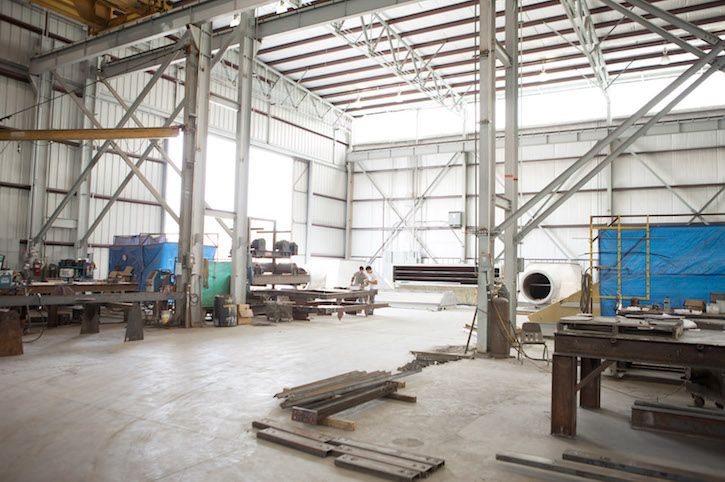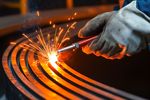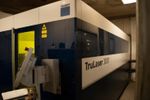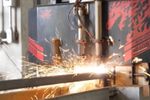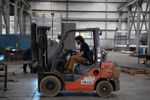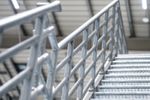Custom metal fabrication projects are like roadtrips: Start with the end in mind or you’ll end up somewhere you didn’t want to be. When your destination isn’t clear, you can’t plan your route. And if you set off without a roadmap, you’ll likely be disappointed.
If you haven’t been down the road of custom metal fabrication before, here is a helpful overview of how it’s supposed to work so you can begin to plan your custom metal fabrication project.
It’s important to be aware of this process because the success of your custom metal fabrication project ultimately hinges on good planning coupled with a solid understanding of the three key phases of any custom metal fabrication project and what is accomplished during each. They are:
- Design
- Build
- Finishing and assembly
- Design
The design phase is when the project goal — a staircase, storage tank, or ash hopper, for example — is defined in terms of required performance, along with quality and appearance.
Constraints must be identified early. For example, narrow doorways in a facility or low bridges on the delivery route will impact assembly and must be accounted for up front. All applicable regulations must be pinned down and the design must ensure compliance as well.
It’s essential to get design right as mistakes on large custom metal fabrication projects are very expensive to correct. That’s why we at Southern Metal Fabricators insists of customers review and approval of shop drawings before any metal is cut.
- Build
With shop drawings prepared, it’s time to start cutting and forming. Oversized custom metal fabrication projects need heavy-duty equipment such as large-bed laser and plasma cutters that can handle thick carbon steel plate, as well as stainless.
Forming comes after cutting, and there are two main methods: rolling and bending. Rolling turns flat plate into curved pieces. It’s the process used for making cylindrical storage tanks and drums. Bending puts corners into flat plate to create components such as structural supports and brackets.
Once components are cut and formed, it’s time for welding. The first step is fit-up. Pieces are brought together to ensure everything will join together per the design. It’s particularly important to anticipate and plan for distortion during welding, making it imperative to work with a custom metal fabricator that has experienced welders and a certified welding procedure.
But welding isn’t the only assembly process used on custom metal fabrication projects. Sometimes assemblies are bolted together, although usually only if that’s necessary for on-site assembly or future repair work.
The last step in the build phase is quality control. Every assembly — or “weldment” — is inspected thoroughly for conformance to drawings and weld integrity is assessed according to the applicable welding codes. If there are mistakes, this is the last chance to put them right before finishing and final assembly.
- Finishing and Final Assembly
Every steel fabrication, stainless excluded, needs an appropriate protective finish to prevent it rusting, and this requires good surface preparation. A full-service fabrication shop performs preparation on-site rather than contracting it out. This ensures no delay between assembly, preparation, and coating, which results in both faster delivery and a longer-lasting finish.
Preparation is done by grit blasting. This removes surface contamination to a level agreed to at the design stage. Taking fabricated metal products back to white metal is more work but ensures the best finish. Following prep, it’s time to prime and paint or, alternatively, go to work with the direct-to-metal (DTM) paint.
As an alternative to paint, hot dip galvanizing is sometimes specified at the design stage. (The zinc coating does an excellent job of resisting corrosion.) In other cases, powder coating is the preferred finish.
Final assembly is the last step. Depending on the design, this may be done at the fabrication shop. With larger custom metal fabrication projects, though, it’s more common to transport sub-assemblies to the installation site and assemble there.
Start with the End in Mind
Custom metal fabrication projects are complex and take detailed planning to ensure the final results meet the project requirements. Every project goes through three key steps — each of which is related to the next and needs to be done right.
Choosing a custom metal fabricator with the capabilities and resources to handle all three phases in house reduces project risk by allowing a complete view of the entire metal fabrication process. Only a fabricator that does it all can produce the high-quality fabrications that the most demanding customers expect.
To learn more about our full-service custom metal fabrication process here at Southern Metal Fabricators, please call us at 1.888.421.9661 or contact us. If you’ve got a custom metal fabrication project that needs doing, we’re confident we’ll have an answer for you that starts with, “Yes, we can do that!”
